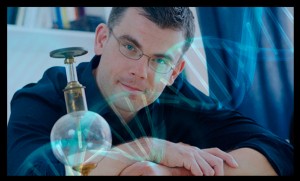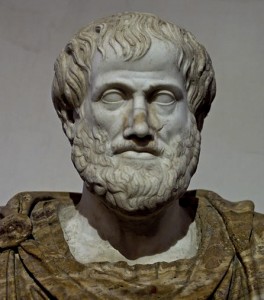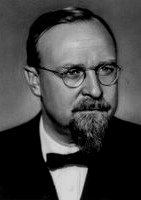 The genetic code is the universal language of life, from the first microbe to man. Searching for the origins of the first genetic code mystery, however, is akin to deciphering the evolution of life.
The genetic code is the universal language of life, from the first microbe to man. Searching for the origins of the first genetic code mystery, however, is akin to deciphering the evolution of life.
Over the past two years, the research team of Bojan Žagrović (pictured) at the Max F. Perutz Laboratories of the University of Vienna has been searching for a natural mechanism driving the genesis of the original genetic code − a longstanding challenge of the evolution industry.
Since the interactions between genetic material (nucleobases, DNA, and mRNA) and amino acids produce the workhorse molecules of life–proteins, Žagrović’s research team has been focusing on understanding what might have been the initial natural physicochemical mechanisms producing the original genetic code.
Even though scientists deciphered the genetic code more than 50 years ago, “the origin of this universal language [genetic code] of life remains mysterious,” reports PhysOrg, an internet science news portal.
“Warm Little Pond”
The origin of life dilemma has been the long-standing Achilles heel of the evolution industry. The dilemma left Charles Darwin (1809-1882) speechless. Not until the third edition of The Origin of Species in 1861 did Darwin cleverly try to skirt the issue –
“It is no valid objection that science as yet throws no light on the far higher problem of the essence or origin of life.”
Darwin’s explanation, however, was only a defense deflection, leaving nineteenth-century scientists undazzled. Popular German biologist, Ernst Haeckel (1834-1919), chided Darwin –
“The chief defect of the Darwinian theory is that it throws no light on the origin of the primitive organism—probably a simple cell—from which all the others have descended. When Darwin assumes a special creative act for this first species, he is not consistent, and, I think, not quite sincere.”
Darwin bristled at such criticism. Eventually, ten years later, only in a letter to one of his closest colleagues, Joseph D Hooker (1817-1911), Darwin offered the “warm little pond” theory. The theory, however, scarcely garnered evolutionary sentimentality.
“Spontaneous Generation”
During the mid-nineteenth century, the theory of “spontaneous generation” of life from non-life, as initially proposed by the Greek philosopher Aristotle (384-322 BC), reemerged as a possible explanation for the origin of life. Logically, Darwin’s “warm little pond” harmonized with Aristotle’s “spontaneous generation” theory.
The brilliant experiments of French chemist and microbiologist Louis Pasteur (1822-1895), however, undermined this once-popular Aristotle-Darwin union. Even prominent British mathematical physicist and engineer, Lord Kelvin (1824-1907), recognized that Darwin was wrong –
“Dead matter cannot become living without coming under the influence of matter previously alive. This seems to me as sure a teaching of science as the law of gravitation.”
Lord Kelvin’s colleague, Nobel Prize-winning physicist Svante Arrhenius (1859-1927), complained about the persistence of Aristotle’s defunct spontaneous generation theory –
“Almost every year, the statement is repeated in biological literature that we have at last succeeded in producing life from matter… Scientific criticism has, however, relegated these statements to the realm of fairy tales.”
The origin of life dilemma continued to plague the evolution industry into the late nineteenth century.
Space Origins
Disparate from a natural mechanism, six years after the publication of The Origin of Species, German physician Hermann Richter (1808-1876) proposed that the origin of life on Earth had arrived from space aboard a meteorite. Richter envisioned a universe where life was deposited from planet to planet, like a bee fertilizing flowers. Richter’s idea of space alien life stuck.
Inspired by the famous French astronomer and science fiction writer Camille Flammarion (1842-1925), Richter popularized the theory of extraterrestrial life. In the absence of a better natural theory, even Lord Kelvin and Arrhenius championed the theory along with the theory of panspermia.
Even by nineteenth-century standards, though, Richter’s theory still had a glaring dilemma–still no natural mechanism for the origin of life. The origin of life problems has a long history of uncoding the theory of evolution.
Space on Earth
The next wave of origin of life research began with the publication of “The Origin of Life” (1938) by Russian biochemist Alexander Oparin (1894-1980). Oparin earned the “20th-century Darwin” title.
Internationally recognized origin of life theorist Cyril Ponnamperuma (1923-1994), recalled that –
“The moment this book reached the English-speaking audience, it was devoured as no other book in the scientific world had been… They read it privately in groups to absorb the new thinking and understanding of one of the most difficult problems of all science.”
Oparin theorized that life spontaneously originated from a “primeval soup” of organic molecules formed on early Earth with a space-like atmosphere that is markedly different from the current atmosphere. In the absence of oxygen, the atmosphere was theorized to consist mainly of methane, ammonia, water vapor, and hydrogen.
By incorporating Darwin’s concept of “natural selection” to advance the theory of simple molecular forms giving rise to life from non-life on Earth, Oparin marginalized Richter’s space theory.
Oparin’s theory, however, predated the discovery of the genetic code later in the twentieth century. The discovery of the genetic code, however, sparked a new wave of dilemmas for the evolution industry—a natural mechanism that generates the first genetic code.
In the words of Nobel Prize winner “for their discoveries concerning the molecular structure of nucleic acids [DNA] and its significance for information transfer in living material,” Francis Crick, conceded,
“An honest man, armed with all the knowledge available to us now, could only state that in some sense, the origin of life appears at the moment to be almost a miracle, so many are the conditions which have to be satisfied to get it going.”
Bojan Žagrović Research
To unravel the miracle of genetic origins, Žagrović’s research team set out to “fully understand the physicochemical principles behind such interactions at the atomistic level,” a twenty-first-century version of “spontaneous generation.”
Using experimentally and computationally derived data, the research team sought to uncover natural self-assembling mechanisms between amino acids and RNA that may have given rise to the first genetic code.
The team results, however, only “support a generalized hypothesis of the origin of the genetic code.” The natural physicochemical self-assembling mechanism that produces the first genetic remains remains a mystery.
Of the four nucleobases, one nucleotide, adenosine, exhibited opposite physicochemical characteristics compared to the other nucleobases. As PhysOrg explains,
“While the majority of mRNA nucleobases were shown to have a direct preference for amino acids they tend to encode, only one, adenine, exhibits the opposite behavior.”
Given the complex physicochemical characteristic differences between nucleobases, Žagrović found no consistent physicochemical principle for genetic code self-assembly as advocated by Stuart Newman, Professor of Cell Biology and Anatomy, New York Medical College.
Žagrović’s self-assembly theory was against the laws of probability. In the article “Prebiotic Systems Chemistry: New Perspectives for the Origins of Life” published in the journal Chemical Reviews (2014), Kepa Ruiz-Mirazo of the University of the Basque Country, Spain, forecasts Žagrović’s probability –
“Even the simplest microorganisms known on Earth are breathtakingly complex. Indeed, the probability that a random sequence of physicochemical events would lead to a bacterium by spontaneous self-organization of biomolecules is negligibly low.”
Finding the natural mechanism generating the first genetic code, therefore, certainly “appears at the moment to be almost a miracle.”
Uncoding Evolution
The search for the genetic origins of life is helping to uncover the theory of evolution. In the graveyard of evolution, theories are Darwin’s “warm little pond,” Aristotle’s “spontaneous generation,” Richter’s space alien life, Oparin’s Earth’s “primeval soup,” and now Žagrović’s naïve prospects of a self-assembling genetic code mechanism.
Genesis
While new genetic evidence continues to challenge biological evolution, scientific evidence remains consistent in underscoring the highly complex mosaic pattern of nature, which is compatible with the Genesis account of creation.
Evidence from molecular biology to validate the theory of evolution scientifically remains speculative.
Genetic Origins Uncoding Evolution is a Molecular Biology article.
Darwin Then and Now is an educational resource on the intersection of evolution and science, highlighting the ongoing challenges to the theory of evolution.
Move On
Explore how to understand twenty-first-century concepts of evolution further using the following links –
-
- The Understanding Evolution category showcases how varying historical study approaches to evolution have led to varying conclusions. Subcategories include –
- Studying Evolution explains how key evolution terms and concepts have changed since the 1958 publication of The Origin of Species.
- What is Science explains Charles Darwin’s approach to science and how modern science approaches can be applied for different investigative purposes.
- Evolution and Science feature study articles on how scientific evidence influences the current understanding of evolution.
- Theory and Consensus feature articles on the historical timelines of the theory and Natural Selection.
- The Biography of Charles Darwin category showcases relevant aspects of his life.
- The Glossary defines terms used in studying the theory of biological evolution.
- The Understanding Evolution category showcases how varying historical study approaches to evolution have led to varying conclusions. Subcategories include –




